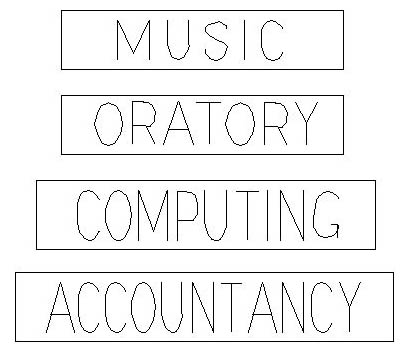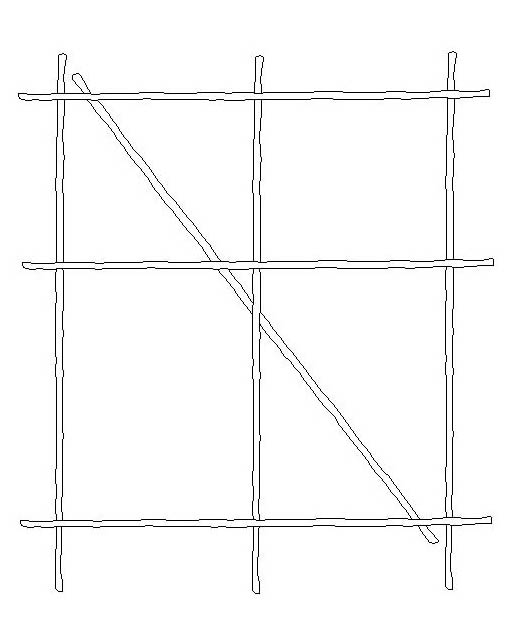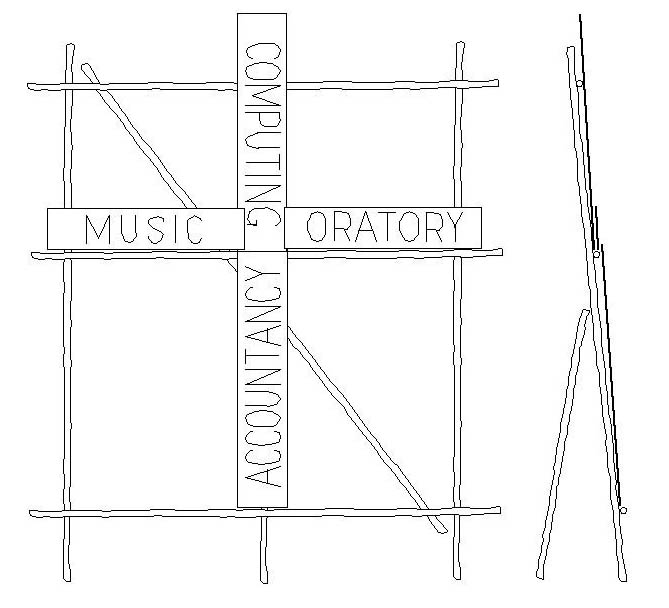|
| BEFORE THE SERVICE -
|
|
Properties :
|
Children's activity ready to give out, inconspicuously stored somewhere at the front.
Money in bags and loose coins.
Spade : out of sight
at the front close to where the servant will "bury" the money bag. ( Ours was behind the curtain on the wall behind the altar. )
Artificial Christmas tree at the front of the organ-side aisle, in the corner by the barrier.
Cards in programmes : Put a card in each programme.
Camp fire By the hospital wall close to where it will be used. Make sure it's plugged in, and there's enough electric wire to stretch to where it's going to be used.
Parcels and letters at the back.
Clipboard, with paper and pencil, at the back.
S's stand, at the back. ....
Placards, at the back, arranged in order of use.
|
|
Furniture :
|
Side table on Hospital side.
Spotlight illuminating the committee.
Table in front of the altar on which to place the offerings.
"Tree" painted on cloth, arranged so that it can be raised as the service proceeds.
Door concealed somewhere convenient for rapid setting up when required. Ours was behind the curtain behind the altar; it was set up with the hinge side of the frame leaning against the side of the altar, and stabilised by a guy connecting the top of the hinge side to a point behind the altar.
|
|
People :
|
Projector person in position before service begins.
|
|
| ACTIVITY
| Something to occupy the children quietly during the sermon. We gave out a picture puzzle ( and coloured pencils for colouring in ), and a word puzzle, both connected to the theme of the service.
|
| ANZAC BISCUITS
|
ANZAC biscuits are well known throughout Australia and New Zealand; if you're elsewhere, you might like to substitute something else for this part. We used it as an example of people applying their talents to an end which would help other people.
( ANZAC stands for "Australian and New Zealand Army Corps". )
|
| CAMP FIRE
|
Something that plausibly represents a camp fire; you could probably get away with a completely imaginary fire if you wished. We used a device we've used before.
|
| CARDS
|
Each of the programmes given to those in the congregation included a small card, to be hung on the small tree during the service as an indication of the people's desire to offer their talents to God. The cards were cut from old Christmas cards - circles
about 7cm diameter with this statement on the back : "I give my abilities and talents
to You, Lord God, that they may be used for Your Glory and for the good of many
people"; to each card was attached a looped ribbon to hang it on the tree.

Click the picture for more detail.
( The Christmas theme was an accident; most of the cards we had were from Christmas. You could probably choose something more appropriate. )
|
| CLIPBOARD
|
The top sheet of paper should have the four talents ( Accountancy, Computing, Music, Oratory - or any others you like, but you might have to do a little rewriting if you change them ) written on it in large letters, so that it is as visible as possible when S displays it on his stand. It doesn't matter if not everyone can see it - it's only for the sake of authenticity.
|
| COMMITTEE ROOM
|
The Committee Room is used in the "Talent Quest" sketch. It is an area big enough to house a table and chairs for four people, allowing space for a bit of moving about - notably by S and his stand. We used the area to the left of the altar ( the opposite side to the projector and screen ), but that's not critical. It is used only during the "Talent Quest", so need not monopolise the space throughout the service.
|
| DOOR
|
The door separates the committee room from the outside world. It emphasises that the committee room is a separate space, and is a signal for those within the room to be silent when the door is shut. You might be able to manage with a completely imaginary door, but ours was effective. It is IMPORTANT that the door be easy to move and fix in place; unless you can allot it space throughout the service, the whole committee room must be built rather quickly.
The position of the door is ( obviously ) related to the position of the committee room and the Narrator during the "Committee room" sketch. It should be natural for the "talents" to enter, speak to the Narrator, then go on through the door into the committee room. Notice that the door should be big enough for S's stand, though some awkwardness in getting the stand through the door can be amusing.
|
| DV
|
"DV" stands for "Disembodied Voice". Our DV stood on the balcony at the back of the church, not used during the service; and alternative would be to use the public address system.
|
| JINGLING
| Effective, if loud enough, but admittedly difficult if you're using chocolate money. Provide some other pocket money if necessary.
|
| MEMORIAL CHURCH
|
This bit is a happy accident, in that it was both a visible example of people using their talents to help others and also shared the theme of world war 1 with the ANZAC biscuits. This is unlikely to be transferable ! You are obviously welcome to use our examples, but might prefer to substitute something of more local relevance, or omit this section.
|
| Metal working, etc. - THE TALENTS.
|
We used pictures related to the talents concerned; it made the point, but there might be better ways. They were attached to the "tree" using adhesive masking tape, which is quick, easy, and strong enough for sheets of paper.
|
| MONEY
|
Given out to the servants, and returned to the Rich Man. It should look good : we used "Gold" coins ( ours were made of chocolate with "gold" wrappers, and appropriately disposed of after the service ). Some "coins" ( 1, 2, and 5 ) are in the bags given to the servants, and there is extra money ready to add to two of the bags.
|
| OFFERINGS
|
The "offerings" are objects, which are examples of materials and craftwork related to the talents listed later. They should be plausibly realistic. The offerings are placed on the table in front of the altar; the representations of the talents are the real gifts to God, and they are attached to the tree.
|
| OUR CHURCH
|
It happened to be a convenient example. Find another example ( it doesn't have to be a church ), or omit this bit.
|
| PARCELS AND LETTERS
|
Two parcels containing mouldy bread, damp, crumbly cake; two parcels containing tins of small Anzac Biscuits; five letters.
|
| PLACARDS
|
These are fair-sized placards with the names of the four talents written on them. They should be big enough to be clearly readable from the congregation, and they should fit together on the stand to make a cross. They have to be displayed while the committee is in the committee room; it doesn't much matter how, so long as the placards are visible and accessible. We propped them up against the front of the table.
Our placards looked like this ( click the picture for a separate version ) :

|
| QUEUE
|
We recycled our helpers through a queue because we didn't have enough of them for each to carry a single item. If you have more people available, you might be able to abolish the queue - though the problems of marshalling a small crowd might be worse than those of managing the recycling !
|
| SIDE TABLE
|
A table to store offerings and the symbols to hang on the tree before they are brought forward in the service. It should be out of the way but reasonably close to the action so that it doesn't take too long to move the items. Ours was on the Hospital side of the church at the front, just by the lowest step.
|
| SPADE
|
An ordinary garden spade, of such a size as to be manageable by Servant 3.
|
| SPOTLIGHT
|
The main function of our spotlight was as a signal to the committee to start and stop talking; any other discreet signal would do. Our production was in the morning, and the illumination from the spotlight made very little difference, but in a darker environment it would also serve to draw attention to the committee room.
|
| STAND
|
The function of S's stand is, in essence, to display the placards in a surprising way suggesting that, however confused the present, greater things could emerge in the future. Ours did so by displaying the placards as a cross, but it was a bit contrived, and you might think of something better.
The stand is also intended to make S look a bit odd, and give some scope for amusing business. It should also give no clue to how it would be used; we could have made something less elaborate, but possibilities we considered would have given away the intention of building a cross. Our stand was a bamboo frame mounted on a child's ancient four-wheeled trolley, which was cumbersome and a bit squeaky.
The stand was of bamboo poles, lightly tied together with thin wire through holes bored at the crossing points, with a diagonal for rigidity. It was supported on the trolley by two bamboo legs ( shown in the second picture following ), also anchored with thin wire.

When mounted, the placards looked like this ( click the picture for a separate version ) :

The heavy lines in the side view show how the placards were supported on the frame; a few judiciously placed pins in the bamboo ensured that they were in the correct position, and didn't slip off. The pins were also handy when attaching the clipboard list.
NOTE : It worked, but could probably be improved. For example, it might be better to turn over the placards when making the cross; it would at least reduce the impression that the four talents used were sufficient to build the Christian church. Alternatively, something to that effect could be added to the script.
|
| STORIES
|
Two true stories, around five minutes each, reinforcing the message of the service. We used personal stories, which seemed to work well. Use some of your own.
|
| TABLE
|
on which to place the various offerings - gold, silver, bronze, fine linen, blue, purple, red wool, goat's hair cloth, ram's skin dyed red, fine leather, acacia wood, oil ( for lamp ), spices, carnellians and jewels. It must ( obviously ) be big enough, and placed to be readily visible. Ours was in front of the altar at the organ side, and somewhat sloped towards the congregation.
|
| TREE ( big )
|
This is a "tree" about 8 metres tall painted on cloth, and arranged so that it can be pulled up step by step as various objects are attached to it. Further details here.
|
| TREE ( small )
|
This is an ornamental tree ( we used an artificial Christmas tree ) used towards the end of the service when the congregation are invited to make a symbolic offering. It should be in a prominent position when used; in our quite small church, we had to keep it in an inconspicuous place ( near the organ ) and move it to the centre front when required.
|



